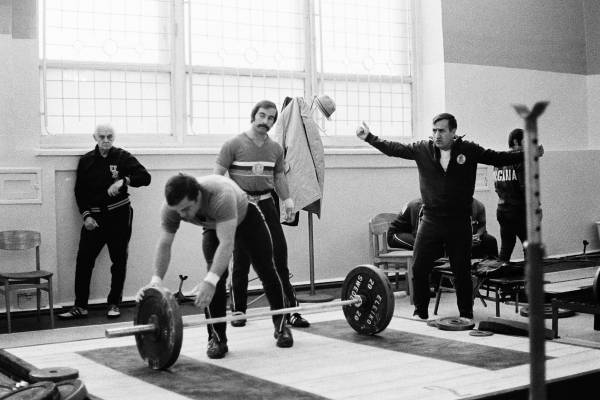Speed of movement, of both the lift and the lifter, is a critical factor in the performances of the snatch and clean and jerk. It is also, along with rhythm and dynamics, an important index for determining theefficacy of a training programand the fitness of the lifter.
Why Weight Is Not a Good Measurement
It is not uncommon for manynovice coachesto evaluate the efficacy or productiveness of the workout by the amount of weight that is lifted. After all, that is the sport’s primary concern, right?It is a primary concern in evaluating the performance during a competition, but it is only one of the indices by which training can be evaluated.
And for those of you who can’t shake the AMRAP mentality as you switch from CrossFit coaching to weightlifting coaching, please remember that an elementary school student can evaluate on the basis of AMRAP. Coaching skills for a complex sport are much more sophisticated than that.
Atypical training macrocyclecan last eight weeks for a raw beginner and twelve weeks for an intermediate or advanced lifter.If you are to write a training program for that span of time, you must find some way to evaluate its efficacy in real time as you watch the training.You need this type of input in order to make decisions about how to manipulate the program to accommodate the individual conditions of each lifter.
If your sole criterion is the amount of weight successfully lifted in each session, you would have to conclude that at certain points in the macrocycle the training is not effective.You might then choose to make alterations that will make the overall program even less productive.
80% Is the Magic Number
After years of coaching, I’ve figured out that the speed of 80% weights is one of the most informative indices I can use to evaluate the efficacy of training.I liken this monitoring to tasting the soup. During the cooking process, the cook periodically takes a taste of the broth. At that point more spices may be added, a decision can be made as to how high the flame should be adjusted, or the quantity of larger ingredients can be adjusted. When it’s right, you get soup.
Now this might seem like a difficult visual skill to master, butweightlifting coachingrequires the development of a number of skills, processes, and instincts that take real time to incorporate.The visual skills can only be developed by watching hundreds of thousands of lifts in real time.
I probably need to watch a given lifter in every training session through at least two macrocycles before I know what the optimal speed of 80% weights should look like. I then have to know what it is going to look like at the end of a preparation mesocycle. This difference in speed is probablynot apparent to the untrained eye, but it is obvious to the athlete’s regular coach.
If at certain points 80%weights are moving too slowly, then the training load may have to be lessened or the nature of the training session may have to be modified. 60% and 70% weights are not reasonable indices as they do not vary sufficiently during the course of a complete macrocycle.85% weights and above can vary too much.
Furthermore I have to evaluate the speed of the lifter and the rhythm of the lift.If these indicators are too far deviated from appropriate ranges, then some change in the training program needs to be proposed.

The Diligence Required of Coaches
The job of a coach includes designing training and then finding means of evaluating the efficacy of that training. The more often and with more diligence the tasks are undertaken, the greater the strides being made towardcoaching competency.
This process is lengthy and is not subject to shortcuts.For those readers serious about embarking on a coaching career, this undertaking should begin with the understanding thatit is a long process, though in the end, a rewarding one.






